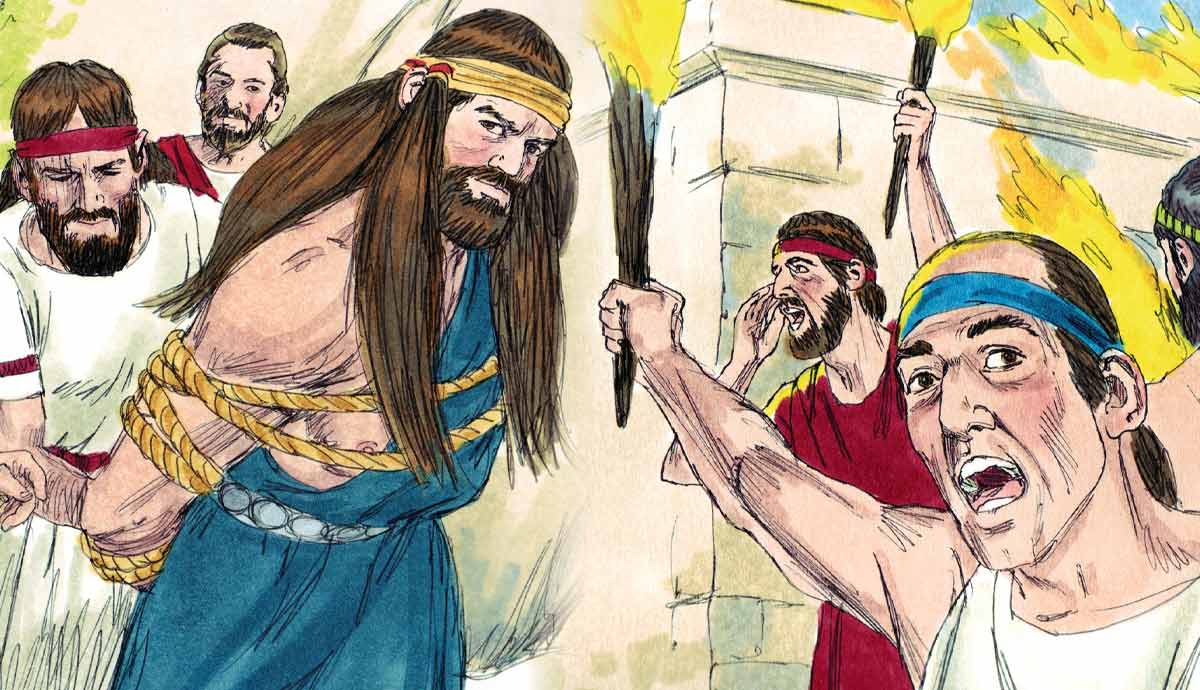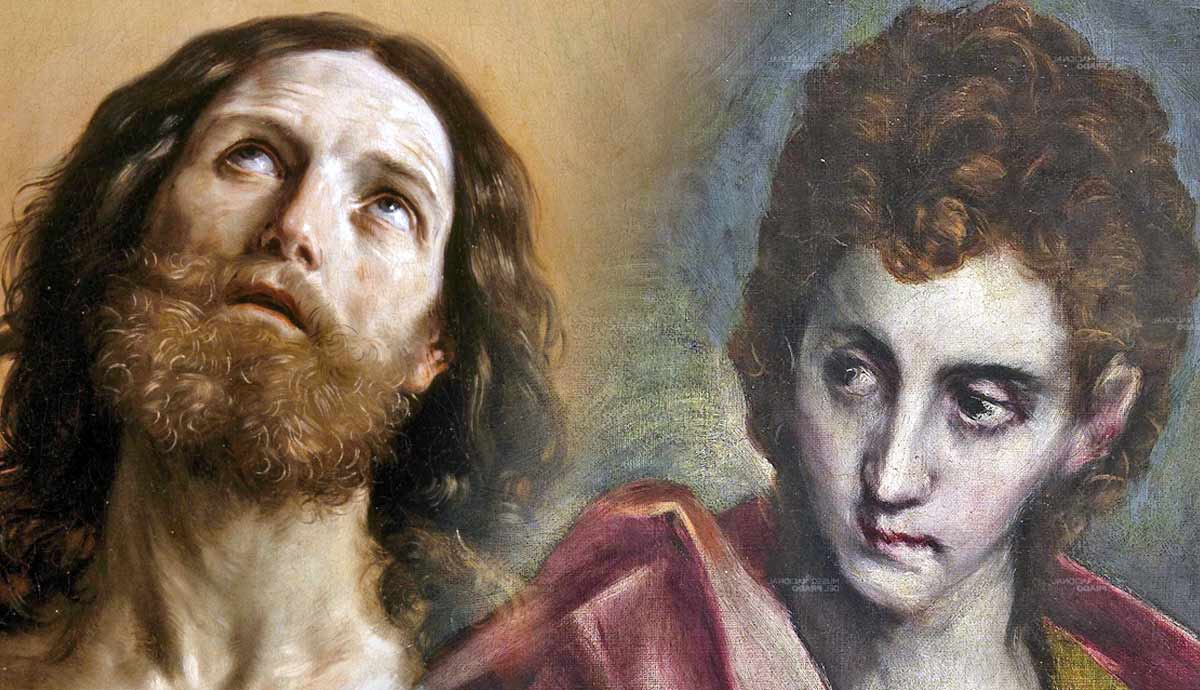
Thomas, like Bartholomew, is one of the Twelve Disciples we would not know much about if it was not for John recording a significant encounter with Jesus. The synoptic gospels and Acts only mention him in lists of the disciples. John, however, provides insight into his character, provides a nickname, and tells us more about this disciple.
First Encounter and Calling as a Disciple

Neither the synoptic gospels nor the Gospel of John provide any information on the context behind the calling of Thomas or where and when it happened. What we do know, based on his inclusion, is that he was called around the time the other disciples were called, early in the ministry of Christ.
Character and Personality

Thomas is the word for “twin” in Aramaic, and Didymus is “twin” in Greek. The Syrians called him Judas Thomas, while the apocryphal Gospel of Thomas, which is part of the Nag Hammadi library, claims that “Didymus, Judas Thomas” was the author.
The Bible does not explain the association between this disciple and the word “twin.” He may have been one of a set of twins or he could have had a dual nature that caused people to give him the nickname. In both cases, it is speculation.
Contrary to the stereotypical view that Thomas was weak in faith, the Bible speaks of him as a very committed disciple. When news of the illness of Lazarus came to Jesus and the disciples, Jesus told them that he wanted to return to Judea. The disciples were opposed to returning, warning that local Jews wanted to stone Jesus (John 11:8). Thomas expressed his willingness to return even if it would lead to his death. He said: “Let us also go, that we may die with him.” This is a phenomenal expression of loyalty. Thomas would rather go to his death with Jesus than live without him.
Thomas strikes the reader as having an inquisitive mind and not simply accepting things without evidence. When convinced of something, however, he was dedicated and willing to go all the way for what he believed in.
Significant Encounters

Thomas had an interesting and insightful exchange with Jesus at the Last Supper.
John 14:3-7
“‘And if I go and prepare a place for you, I will come again and will take you to myself, that where I am you may be also. And you know the way to where I am going.’ Thomas said to him, ‘Lord, we do not know where you are going. How can we know the way?’ Jesus said to him, ‘I am the way, and the truth, and the life. No one comes to the Father except through me. If you had known me, you would have known my Father also. From now on you do know him and have seen him.’”
Although Thomas was the one speaking, his words were indicative of the lack of understanding the disciples had of the true mission and purpose of Jesus. Thomas seemed to think that Jesus meant he was going to prepare a place for the disciples on this material plain. That would be contrary to all the occasions the disciples were sent to prepare a place for Jesus to go to or reside at various locations. He evidently did not have the insight that Jesus hoped his disciples would have when he said: “And you know the way to where I am going.” Patiently, he explained that he was speaking of the way to the Father, and how he and the Father were one.

Doubtless, the most significant interaction between Thomas and Jesus is when Jesus confronts the disciple on his unbelief.
John 20:24 -29
“Now Thomas, one of the twelve, called the Twin, was not with them when Jesus came. So the other disciples told him, ‘We have seen the Lord.’ But he said to them, ‘Unless I see in his hands the mark of the nails, and place my finger into the mark of the nails, and place my hand into his side, I will never believe.’ Eight days later, his disciples were inside again, and Thomas was with them. Although the doors were locked, Jesus came and stood among them and said, ‘Peace be with you.’ Then he said to Thomas, ‘Put your finger here and see my hands; and put out your hand, and place it in my side. Do not disbelieve, but believe.’ Thomas answered him, ‘My Lord and my God!’ Jesus said to him, ‘Have you believed because you have seen me? Blessed are those who have not seen and yet have believed.’”
Thomas was absent from the other disciples when they saw Jesus for the first time after the Resurrection. They told Thomas that Jesus had risen but he did not believe them. He wanted to see and feel the evidence for himself. Later, Jesus miraculously appeared inside the locked room. From what can be gleaned, Jesus was not in the room when Thomas verbalized what he would consider satisfactory evidence, yet Jesus invited Thomas to touch his wounds and see his hands. The Bible does not clarify whether Thomas touched the wounds Jesus suffered or if he inspected the hands of Jesus before he proclaimed his belief by using the terms “my Lord” and “my God.”
Jesus asked Thomas whether his belief was based on what he saw. It is significant that the author of the Epistle to the Hebrews later defined faith as not based on what can be visually perceived when he wrote: “Now faith is the assurance of things hoped for, the conviction of things not seen.”
Legacy and Tradition

Legend has it that Thomas ministered primarily in India, where he died. There are accounts of Thomas also ministering in China, Indonesia, and Ethiopia after having gone to India, but he returned to India in each. Some sources claim Thomas was also responsible for bringing the faith to the Persians, Medians, and Parthians on his way to India. The 4th-century church father, Eusebius of Caesarea, in his work Ecclesiastical History, confirms the ministry of Thomas in Parthia.
According to the Nomocanon of Abdisho bar Berika, Thomas taught the trinity (a theological construct developed much later), adoption as sons, and baptism, among other things. His promotion of a monotheistic religion and opposition to idolatry in a part of the world that was exclusively polytheistic arguably led to his persecution and death.
In addition to the apocryphal and gnostic Gospel of Thomas, the Acts of Thomas is among the pseudepigrapha that provide some detail on Thomas’s ministry. According to this source, the apostles divided the known world into different areas, and they assigned one to each apostle. Thomas was assigned to India but was reluctant to minister there, claiming that health issues prevented him from going.

The story goes that a merchant sold Thomas as a slave to a king from India. The Indo-Parthian King Gondophernes put Thomas in charge of constructing his royal palace because he was an experienced carpenter. Instead of spending the money allocated on the construction project, Thomas allegedly misappropriated the funds to do charitable work among the locals. When confronted with the lack of progress on the project, Thomas claimed he was building the palace in heaven. Authorities imprisoned him for this misdeed but freed him from prison and slavery when he agreed to rise to his calling as a missionary.
This dubious source is unreliable and seems contrary to the character of Thomas described in the Bible narrative. It is hard to imagine that Thomas, who was willing to return with Jesus to Judea and risked being stoned, would abandon the faith and not be willing to fulfill his mission as an apostle after having seen the resurrected Jesus.
Though not mentioned by name, Thomas was among the disciples who heard the call to be a witness for Jesus “unto the uttermost part of the earth,” having seen Jesus ascend into heaven and heard from the angels that Jesus would return as he had ascended.
Death

Different traditions exist on the death of Thomas. Syrian tradition claims authorities killed him with a spear in Chennai, India, and that the place of his death was named St. Thomas Mount. They buried him in Mylapore, Chennai. Latin tradition differs on the exact date of his death but also identifies India as the place of death. It claims relics related to Thomas were sent to Edessa. The St. Thomas Cathedral Basilica in Chennai, built in the 17th century marks the spot of Thomas’s tomb. The final resting place of his remains is supposedly in Ortona, Italy.
Priests and soldiers killed Thomas while he was praying. This vile act was due to the many people he converted to Christianity, among whom were many nobles and royals.








